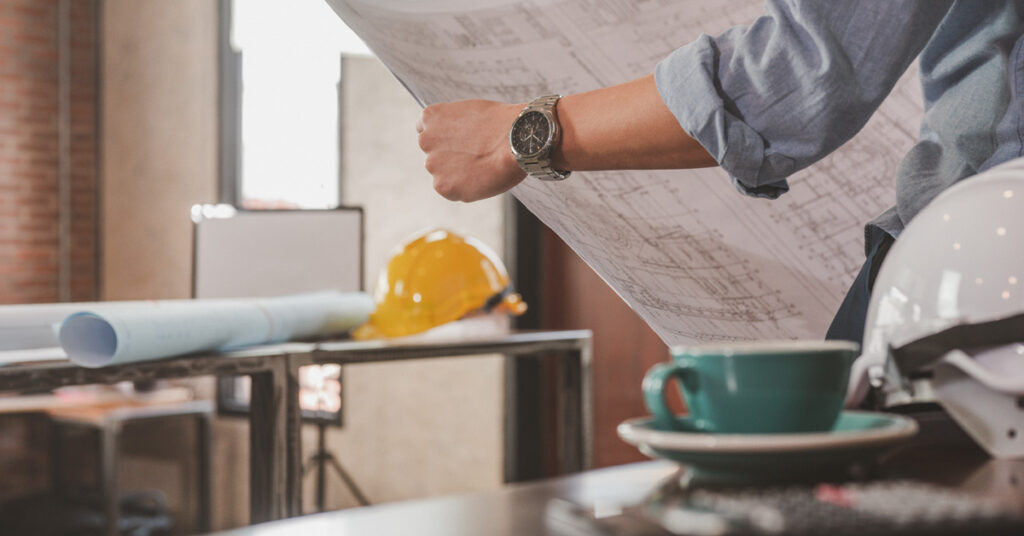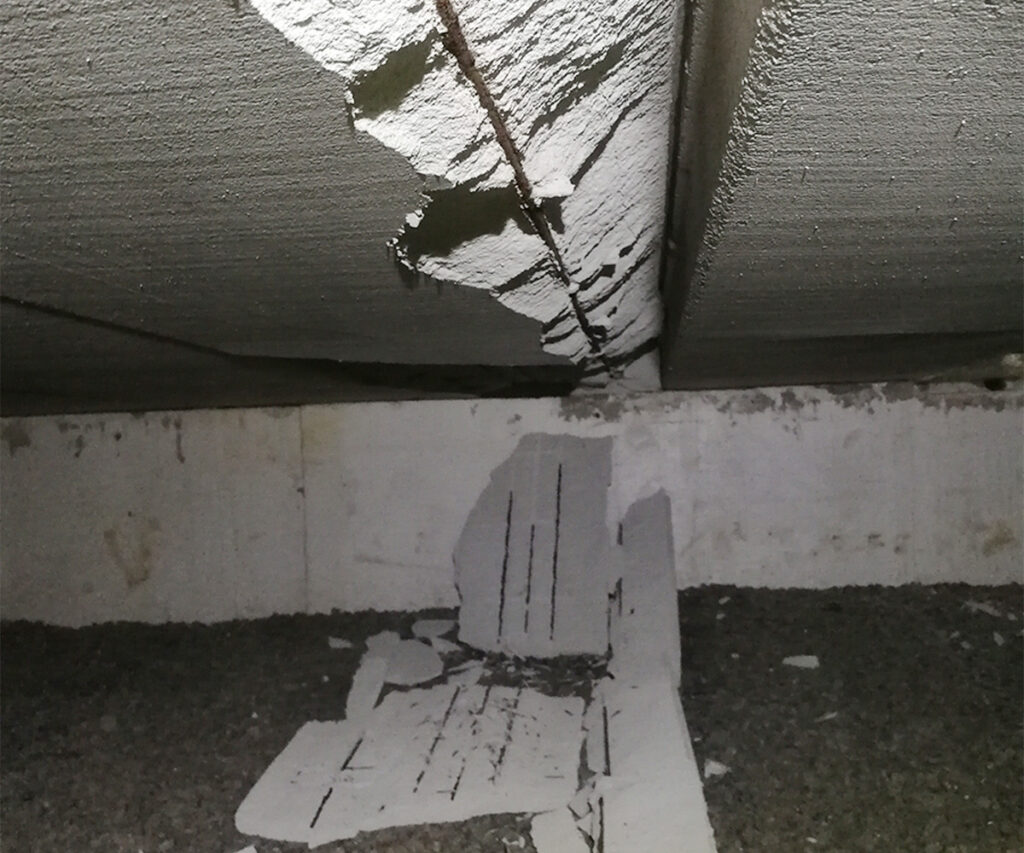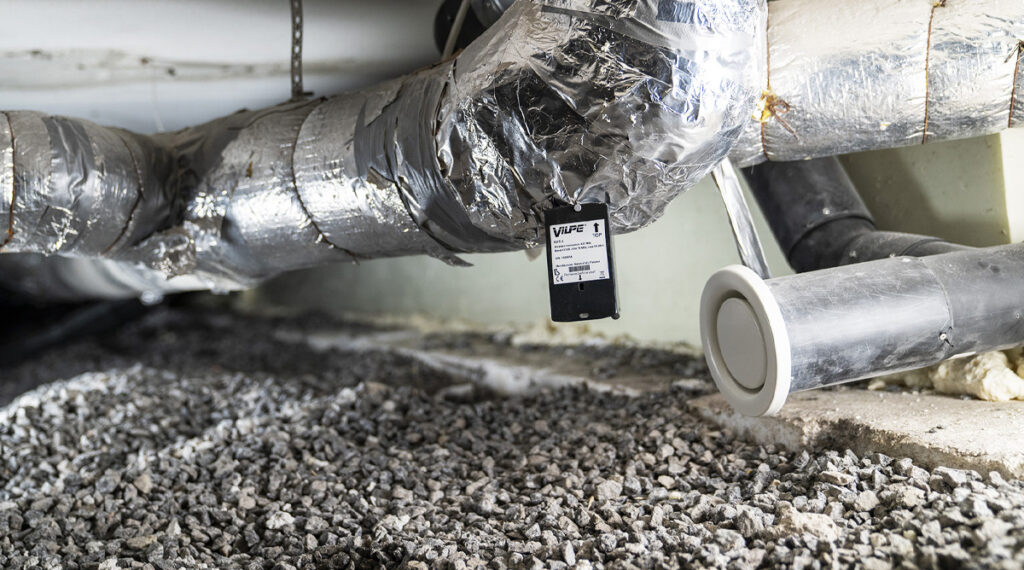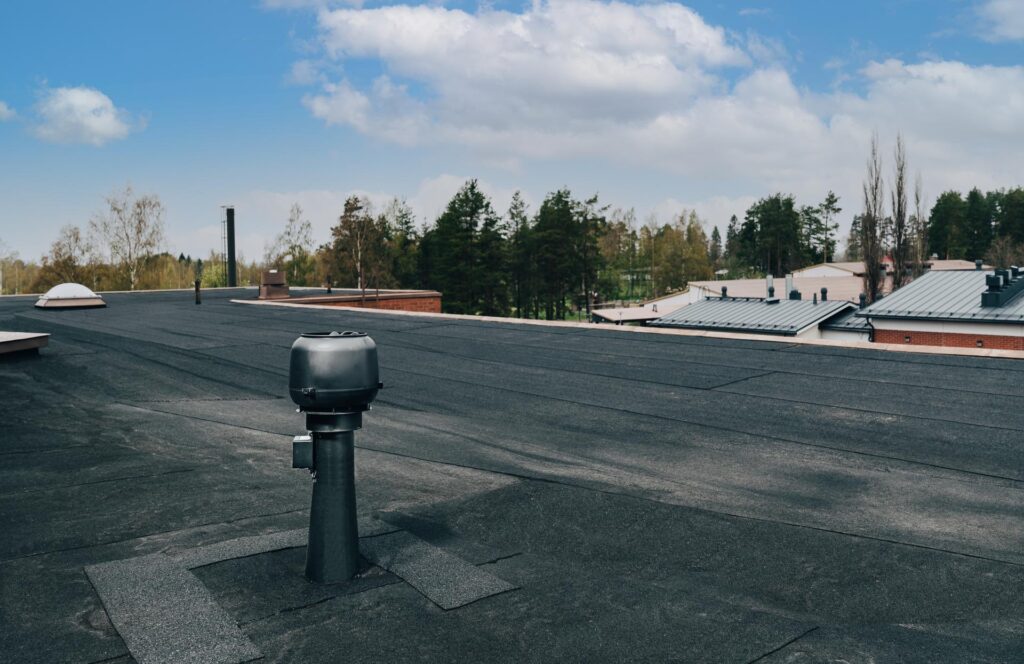Roof and Crawl Space Ventilation for a Healthier Building

The ventilation of the roof and crawl space plays a significant role in ensuring the health of buildings. Poor roof and crawl space ventilation leads to humidity damage and expensive repairs. Fortunately, you can detect these problems in time with modern IoT technology.
Why Proper Roof and Crawl Space Ventilation Matters

Effective roof and crawl space ventilation is necessary to efficiently remove humidity; otherwise, the building is exposed to humidity and mold damage. The building’s structures can withstand short-term exposure to humidity, as humidity can enter the structures, for example, through ventilation air. Roof structure ventilation removes humidity.
In contrast, a humidity problem occurs when the roof structures or crawl space cannot dry. In such cases, the roof or crawl space ventilation does not function properly. This kind of situation can arise, for example, if the weather remains rainy for an extended period. These problems can be avoided by ensuring demand-controlled roof or crawl space ventilation. A well-functioning crawl space and roof ventilation extends the building’s lifespan. At the same time, it helps to avoid unnecessary and costly renovations.
Crawl Space Ventilation: Protecting the Foundation from Humidity

The crawl space is prone to humidity problems, and there can be several reasons for this. Humidity naturally rises from the ground, and if the crawl space cannot dry properly, humidity can penetrate its structures, causing damage over time. This issue is particularly problematic in winter: when temperatures drop, water freezes within the structures, causing cracks.
Additionally, humidity creates favorable conditions for mold and fungal growth, which, in the long term, can severely damage the crawl space. The crawl space is a particularly challenging area to renovate, and unfortunately, most insurance policies do not cover these slowly developing humidity damages – the building owner tends to be the one that pays the bill.
The Role of VILPE Sense in Roof and Crawl Space Ventilation

VILPE Sense humidity control is a solution for crawl space and roof ventilation. The system’s roof fan ventilates the crawl space or roof structures as needed. For example, if the system detects excessive humidity in the structure, the roof fan increases its operation to remove the excess humidity. Once the excess humidity has been removed, the roof fan automatically adjusts to a lower level. The VILPE Sense humidity control system is suitable for ventilating both new and old buildings’ crawl spaces and roof structures.
Crawl spaces and roof structures can also be ventilated using passive underpressure ventilation. However, with VILPE Sense, humidity is removed more efficiently. For example, it ventilates the crawl spaces and roof structures only when the conditions are appropriate. During rainy weather or extreme cold, ventilation decreases or stops entirely.
Roof Ventilation System Can Reveal Roof Leaks

When VILPE Sense ventilates the roof structure, it also continuously monitors its condition. This smart feature helps building owners detect potential issues – such as leaks – at an early stage. For instance, a sudden and sustained increase in humidity levels may indicate a leak. With VILPE Sense, a building owner can identify problems in time, which allows for immediate repairs and prevents damage from escalating.
Beyond protecting the building itself, demand-controlled roof ventilation also supports more sustainable and energy-efficient construction. Humidity damage and its repairs cause significant amounts of carbon dioxide emissions. By keeping roof structures dry and healthy, VILPE Sense not only saves money—it also helps protect the environment.
Benefits of VILPE Sense: How Smart Technology Enhances Airflow Efficiency
VILPE Sense humidity control offers several benefits for property maintenance and building owners.
- Smart on demand ventilation. The system monitors the condition of your roof or crawl space and ventilates it at an optimal level. This will always keep your roof structures dry and healthy.
- Smarter maintenance with data. The system collects objective data to support informative decision-making when it comes to maintenance or repairs of structures.
- Alarming you when there is a problem. Reacting to potential leaks in time is key in preventing expensive renovations. When the alert limits are activated, the system will automatically alert you when it detects a potential problem.
- No mold and fungi. Dry structures prevent the growth of mold and fungi that destroys your building in the long-term.
- Increased resale value of the property. Prove the condition of your building structures with the historical data collected by the system.
Frequently asked questions about roof and crawl space ventilation
Why Does the Crawl Space Need Ventilation?
The crawl space ventilation prevents humidity from the ground from accumulating in the structures. Humidity can lead to mold growth and reduce the structure’s durability. A ventilated crawl space stays dry and healthy, which extends the building’s lifespan. If there are moisture or mold problems in the crawl space, they can spread to the indoor air of the building.
Why Do Roof Structures Need Ventilation?
Ventilation of roof structures removes moisture and prevents the risk of mold damage. It keeps the building healthy and extends its lifespan.
What Do You Need for Roof and Crawl Space Ventilation?
Ventilation of structures requires replacement air. Existing structures, such as underpressure air vents or crawl space ventilation poles, provide the replacement air.
In the VILPE Sense humidity control system, the roof fan controls ventilation by removing moist air from the structures.
How to Recognize Poor Ventilation in Roof Structures?
Conducting a structural inspection is a reliable way to check the roof structure condition. An inspection is recommended if you notice damage on the roof. A stale indoor air can also indicate poor roof ventilation. Sometimes a poorly ventilated crawl space can cause indoor air problems in the building.
However, hidden damage can easily go unnoticed since the structures would need to be opened and inspected. This can be difficult and time-consuming. In such cases, automatic humidity control systems like VILPE Sense provide help for the building owner.
How to Recognize Poor Ventilation in the Crawl Space?
A mouldy odour can indicate poor crawl space ventilation. Indoor air problems, such as stale air, may also result from inadequate crawl space ventilation. Visible moisture damage in the structures, such as rotting wooden structures or microbial growth, can also indicate poor crawl space ventilation. If there are no ventilation openings in the crawl space and the air cannot circulate otherwise, it is an indication of poor ventilation.
Why choose VILPE Sense instead of passive underpressure ventilation?
VILPE Sense improves passive, underpressure air circulation in structures. It gives alerts of the increased humidity of the structures and dries them. The system can be used to improve, regulate and monitor the ventilation of structures. The collected data also makes it possible to detect hidden roof leaks.
